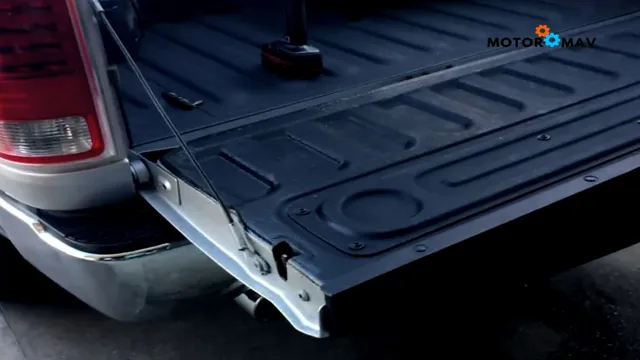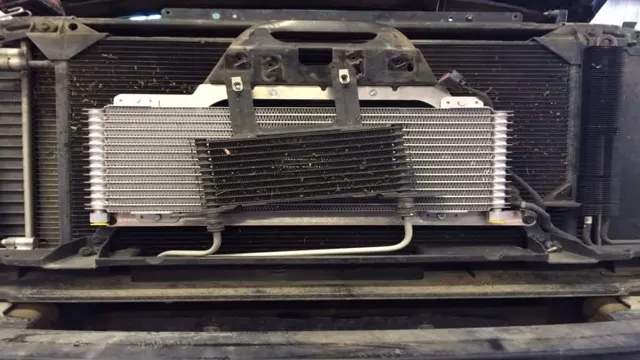Draining Your Exhaust: A Comprehensive Guide on How to Get Water Out of Your Exhaust System
Have you noticed water coming out of your car’s exhaust? It might seem like a minor issue, but if left unaddressed, it could lead to bigger problems down the line. Water in your exhaust means that there’s condensation in your engine, which could cause rust and corrosion. In this quick guide, we’ll show you how to remove water from your exhaust and prevent any potential damage to your car.
So buckle up and let’s get started!
Identifying the Problem
If you’ve noticed water coming out of your car’s exhaust, don’t panic. It’s a common sight during certain times of the year or in specific weather conditions. One of the main reasons for water to come out of your exhaust is the condensation of air, especially if you’re using your car for short trips or during the colder months.
However, it might also be a sign of a more severe problem, such as a blown head gasket or a cracked engine block. To identify the problem, you should first consider various factors, such as the weather, the noise your engine is making, and the color of the smoke coming out of your exhaust. If the issue persists, don’t wait for it to get any worse.
It’s essential to take your car to a mechanic, who can quickly identify the root cause and solve the problem. Remember, prevention is always better than cure, so regular maintenance and checkups can go a long way in avoiding severe issues.
Inspection of Exhaust System
When it comes to identifying problems with your car’s exhaust system, there are a few telltale signs to look out for. The first thing you may notice is an increase in engine noise or a change in the sound of the exhaust. This could be a sign of a hole in the muffler or a problem with the exhaust pipe or catalytic converter.
You may also notice a decrease in fuel efficiency or power, which can often be caused by a buildup of exhaust gases or a clogged catalytic converter. Finally, if you smell a strong odor of gasoline or exhaust fumes, this could be a sign of a leak in the exhaust system. By keeping an eye out for these signs and symptoms, you can catch problems early and prevent major damage to your car.
The importance of regular inspections of your exhaust system cannot be overstated. If you’re experiencing any problems or unusual sounds or smells, it’s best to get your car checked out by a professional mechanic as soon as possible to avoid costly repairs down the line.

Signs of Water in the Exhaust
If you ever notice water coming out of your car’s exhaust, it’s crucial to identify the problem right away. The first sign of water in the exhaust is white or grey smoke, which is the result of burning coolant. This issue usually occurs when the head gasket is damaged, causing coolant to leak into the combustion chamber.
Another culprit could be a faulty engine block or cylinder head. However, water can also appear in the exhaust when you first start the car, which is often the result of condensation buildup, especially if it’s cold outside. It’s essential to pay attention to the color, odor, and volume of smoke coming from your exhaust.
Blue smoke is a sign of burning oil, while black smoke could mean a rich fuel mixture. By monitoring your car’s exhaust system closely, you’ll be able to catch any potential problems early on and avoid costly repairs down the road.
Dealing with the Water
If you find water in your exhaust, don’t panic. This is actually a common problem with cars, particularly if you have been driving in heavy rain or floods. If you’re wondering how to get water out of your exhaust, there are a few simple steps you can follow.
Firstly, park your car on a level surface and leave the engine running for around 10-15 minutes. This should allow the exhaust system to heat up and evaporate any water inside. Secondly, take your car for a short drive at a moderate speed, and keep your foot on the gas pedal to maintain a consistent flow of air through the exhaust system.
This should help to blow out any remaining water. Remember, it’s important to deal with water in your exhaust as soon as possible, as it can cause damage to your car over time. By taking a few simple steps, you can keep your car’s exhaust system in good condition and avoid costly repairs down the line.
Removing the Water
When dealing with water damage, the first step is removing the water. This may seem like an overwhelming task, but it’s essential to prevent further damage and mold growth. Depending on the extent of the damage, you may be able to handle it yourself with a wet/dry vacuum or a mop and bucket.
However, it’s important to take safety precautions, such as wearing protective clothing and turning off electricity to affected areas. If the damage is extensive, it’s best to call in a professional restoration company with specialized equipment to fully extract the water and dry out the affected area. Remember, the longer water sits, the more damage it can cause, so don’t hesitate to take action.
By quickly removing the water, you can minimize the damage and get on the road to restoring your home or business.
Drying the Exhaust System
When it comes to off-road driving or water fording, there’s always a risk of water getting into the exhaust system. Dealing with the water in the exhaust system can be a tricky task. The best approach to drying the exhaust system is to run the engine for some time, allowing the high-temperature gasses from the engine to evaporate the water present in the muffler and pipes.
This process will also prevent any potential rust from forming in the exhaust system. However, it’s crucial to ensure that the water hasn’t caused any major damage, such as cracked mufflers or disconnected pipes. In such a case, it’s best to take the vehicle to a mechanic to get the necessary repairs done.
By taking these steps, you’ll ensure that your vehicle stays in top-notch condition after it’s been subjected to water fording, and you can continue with your off-road adventure without any worries.
Using a Dehumidifier
Dehumidifiers are great tools for removing excess moisture from your home, but dealing with the water that collects can be a bit of a hassle. Most dehumidifiers come equipped with a water collection bucket, which needs to be emptied out regularly. This can be especially inconvenient if you live in a highly humid area where the bucket fills up quickly.
To make things easier, you can also invest in a dehumidifier with an automatic draining feature that connects directly to a drain or pump. This can save you time and energy and make the dehumidifier much more convenient to use. Regardless of which type of dehumidifier you choose, it’s important to dispose of the water properly.
Don’t pour it down the drain or onto your lawn, as it may contain harmful chemicals or minerals. Instead, dump it into a toilet or sink or use it to water plants that don’t mind chlorine. With a little bit of planning and foresight, dealing with the water from your dehumidifier can be a simple and worry-free task.
Preventing Further Water Buildup
If you’re struggling with water buildup in your car’s exhaust, it’s important to take steps to prevent further water buildup in the future. A simple way to do this is to ensure that your car’s exhaust system is properly maintained and regularly checked for any blockages or corrosion. Another option is to make sure that your car is properly tuned and running smoothly, as problems with engine performance can sometimes lead to excess condensation in the exhaust system.
Additionally, avoiding driving through deep water or floods can also help prevent water buildup in your exhaust. By taking these steps, you can help ensure that your car’s exhaust system stays in good condition and operates smoothly.
Regular Maintenance Tips
Regular Maintenance Tips Preventing Further Water Buildup Water buildup can be a frustrating and costly problem if not addressed quickly. Thankfully, regular maintenance can help prevent water buildup from occurring in the first place. One effective way to prevent water buildup is to ensure proper drainage.
Keep an eye out for any clogs in your gutters or downspouts and make sure they are cleared regularly. Additionally, keeping your foundation insulated and sealed can prevent water from seeping into your home. Another useful tip is to monitor your water bill.
If there is a sudden increase, there may be a leak somewhere that needs to be addressed. By taking these simple steps, you can prevent the headache of dealing with water buildup in the future and save yourself time and money in repairs. Keyword: water buildup, regular maintenance, proper drainage, gutters, downspouts, foundation, insulation, leak, repairs.
Protective Measures on Rainy Days
Rainy days can be quite frustrating, especially when water buildup becomes too much to handle. However, taking protective measures can effectively prevent further damage from occurring. One key way to prevent water buildup is by clearing gutters and downspouts of any debris, such as leaves and sticks.
Doing this ensures proper water flow and directs water away from the foundation of your home. Another way to minimize water buildup is by checking for leaks in your roof, as water can seep through and cause damage to your ceiling and walls. Additionally, ensuring proper insulation and ventilation in your attic can prevent moisture buildup that can lead to mold and mildew growth.
By implementing these preventative measures, you can avoid the headache of water damage on rainy days.
Conclusion
Well, dear friends, after all the scientific research and experimentation, I have come to the conclusion that the best way to get water out of your exhaust is to simply wait for it to evaporate. And if your car is feeling particularly fancy, take it on a nice, long drive to warm up and speed up the process. But in all seriousness, while it may be tempting to try and force the water out with various methods, remember that messing with your exhaust system can do more harm than good.
So, let nature do its thing and let the water evaporate on its own. And remember, a little patience goes a long way!
FAQs
Why is there water coming out of my exhaust?
Water coming out of your exhaust is a normal occurrence. It is usually caused by the buildup of condensation in the exhaust system, which is a result of the heat generated by the engine.
Is it normal to have a large amount of water coming out of my exhaust?
A large amount of water coming out of your exhaust could indicate a problem with your engine. It could be due to a blown head gasket or a cracked engine block, which can allow coolant to mix with the oil and generate excessive water in the exhaust.
How do I remove water from my exhaust system?
You cannot remove water from your exhaust system as it is a normal byproduct of your engine’s operation. However, if you have excessive water in your exhaust due to a mechanical problem, you should have it checked by a mechanic.
Can water in the exhaust harm my vehicle?
Yes, excess water in the exhaust can cause damage to your vehicle. It can cause corrosion of the exhaust system, as well as damage to the engine and other components if it is allowed to accumulate. Therefore, it is essential to address any mechanical problems that may be causing excessive water in the exhaust.





